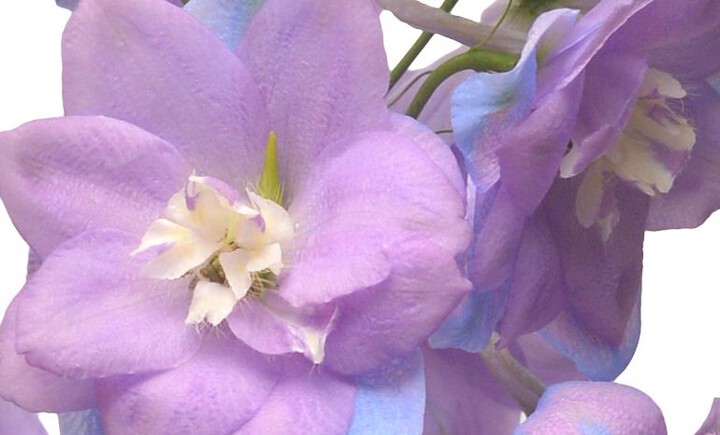
Everyone loves to receive flowers on their big day, but you can make a gift really meaningful by selecting flowers that correspond to your loved one’s day of birth. If you wish to know what’s July’s birth flower is, today’s your lucky day, as we’ve put together a handy guide…
What is the flower for July?
The flower for July is the Delphinium. It boasts beautiful lengthy spikes of energetically hued blooms, which come in pretty shades of purple and blue. They’re symbolic of light-heartedness, summer fun and love, making them the ideal flower for a midsummer birthday.
Delphiniums in history
The ancient Greeks coined the name “delphinium”, because they thought the flower shape resembled that of a dolphin’s nose. Delphin, simply translates to dolphin. Delphinium is also often referred to as “larkspur” which is shared between two species: the perennial Delphinium and the annual Consolida. The English term is said to come from the plant looking like the claws of a lark.
Colours and symbolism
Delphiniums are cultivated for their showy spikes of hot-hued blooms, which come in a variety of beautiful shades, including pink, blue, white and purple. European settlers and Native Americans once used them to create blue dye, however, it’s believed that the most primal use of delphinium flowers was for scaring away scorpions. In terms of their symbolism, they express a feeling of lightness and levity due to their lush blooms and are symbolic of an open heart and passionate attachment.
Where do Delphiniums come from?
Delphiniums flourish in a climate that is both cold and moist. They are indigenous to the Northern hemisphere, where they tend to grow in mountainous African tropics. If you look close enough, you will be able to spot the distinctive, dolphin-shaped blossoms. They have also earned the nickname ‘Queen of the Border’ because of their statuesque shape.
Tips when growing Delphiniums
There are plenty of tips for growing Delphiniums, as detailed here:
·Growth takes two popular routes – either through propagation and cutting or from seed raising.
·When planting seeds, ensure they are fresh, or you’re unlikely to get the results you want to see.
·For best results, choose a dedicated patch in the garden and use very fertile, but slightly alkaline soil. Place them in a position that gets plenty of sun and ensure they are watered regularly. It’s important to keep these plants moist at all times as if they are left to dry out, mildew can occur.
·Use canes to support Delphiniums as they begin to grow taller and ensure adequate support from that point onwards.
·Use mulch to keep the plants nourished as they are heavy feeders and require plenty of nutrients in order to thrive.
·Prune plants regularly when young as thinning is important for the plant’s health.
What to avoid doing
·If you’re struggling to grow healthy Delphinium blooms, you could be doing a few things wrong, including under watering the plants. These species of flower require a good deal of water in order to thrive. Without the sufficient amount of water, they’re prone to rotting.
·If growing them from scratch, it’s important to avoid sowing the seeds too deeply. The perfect position is just under the surface. Try to avoid planting the seedlings too close together too, as it can encourage mildew when the plants bloom.
·In addition to the above, it’s wise to avoid germinating old seeds, as they often lose their vitality after one year.
Fun facts about Delphiniums
·There are an impressive 400 species of delphinium, which come from the ranunculaceae or buttercup family.
·To create blue ink, delphinium sap can be combined with the chemical, alum.
·These plants can be deadly! The seeds are extremely poisonous to both animals and humans when consumed.
·The effects of these plants can cause extreme illness, including paralyses and in the worst-case scenario, even death. It’s therefore imperative you keep them away from children and pets! It’s very important to place these plants in a safe place, when displayed in both the home and garden.
·Although they have a number of dangerous qualities, delphiniums can also be used to aid asthma.
· The inner two to four petals of this plant is called the ‘bee’.